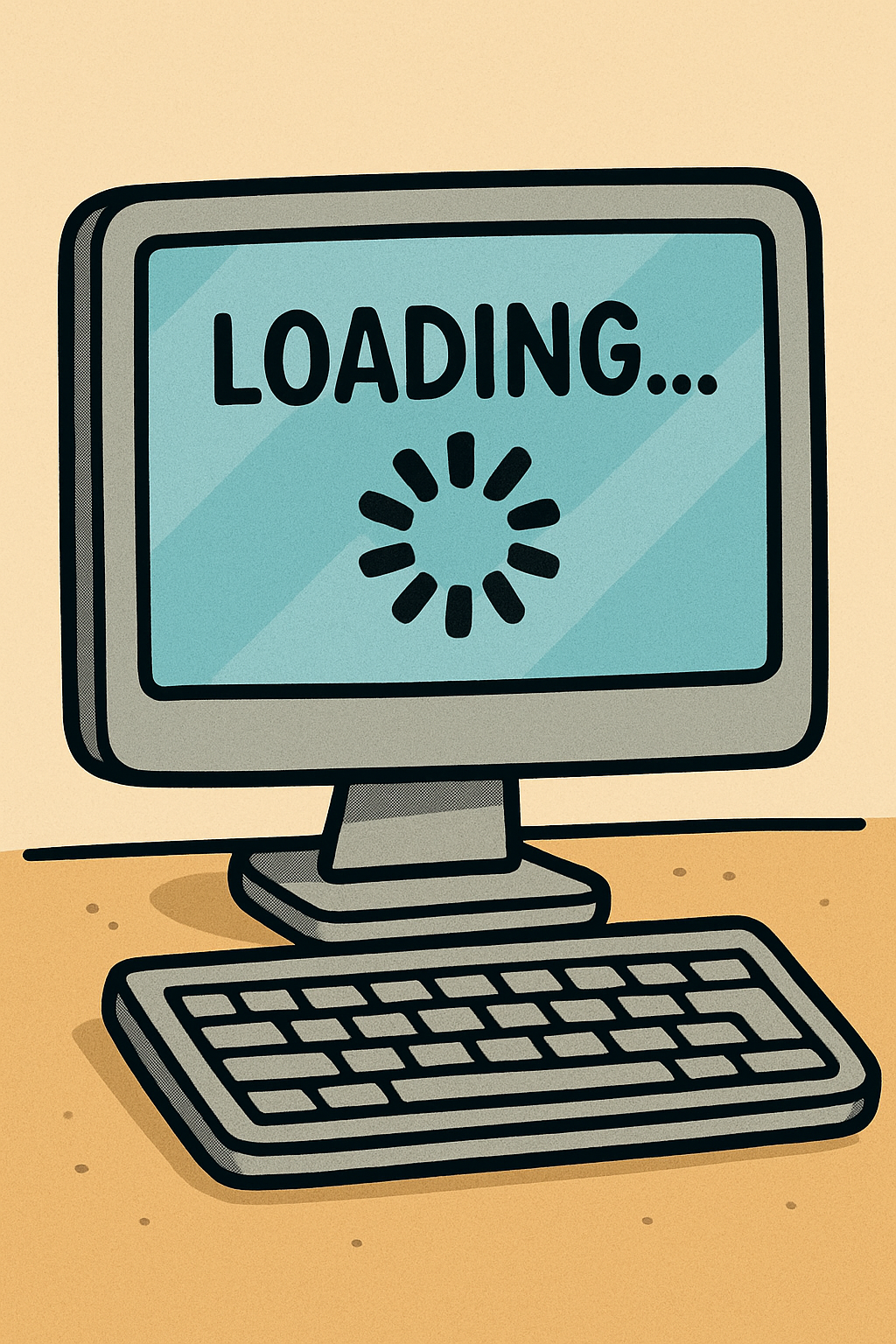Our Best Budget Internet Options
Mon Jul 21 2025
|Internet ServicesComplete guide to low income internet options in 2025. Find affordable connectivity programs, ISP discounts, and free resources after ACP ended

Reliable internet access is essential for education, employment, healthcare, and social connection. However, the cost of internet service can remain a significant barrier. With the end of the Affordable Connectivity Program (ACP) in April 2024, millions of Americans are searching for alternative low income internet options to stay connected.
Understanding the Digital Divide and Its Impact
The digital divide continues to affect millions of Americans, with low-income households disproportionately struggling to afford reliable internet service. According to recent data, approximately 5 million households lost internet access when the ACP ended, highlighting the critical need for sustainable low income internet options.
Internet access is no longer a luxury—it’s a necessity for:
- Remote work and job searching
- Online education and homework completion
- Telehealth appointments
- Government services and benefits applications
- Social connections and mental health support
Current Government Programs for Low-Income Internet Access
The Lifeline Program: Your Reliable Federal Option
While the ACP has ended, the Lifeline program remains a crucial federal resource for low-income households seeking affordable internet access.
Key Benefits:
- $9.25 monthly discount on internet or phone service
- Enhanced benefits in some states (Oregon offers $19.25/month)
- No expiration date, providing long-term stability
Eligibility Requirements:
- Household income at or below 135% of Federal Poverty Guidelines
- Participation in qualifying programs including:
- SNAP (Food Stamps)
- Medicaid
- Supplemental Security Income (SSI)
- Federal Public Housing Assistance
- Veterans Pension and Survivors Benefit
To apply, contact participating providers directly or visit your state’s Lifeline website for application procedures.
International Options: Canada’s Connecting Families Initiative
For Canadian residents, the Connecting Families Initiative provides excellent low-cost internet options:
Available Plans:
- Plan 1: Up to 10 Mbps download, 1 Mbps upload, 100 GB data for $10/month
- Plan 2: Up to 50 Mbps download, 10 Mbps upload, 200 GB data for $20/month
- No equipment or installation fees
Eligibility: Families receiving maximum Canada Child Benefit or seniors receiving maximum Guaranteed Income Supplement receive invitation letters with unique access codes.
Major ISP Low-Income Internet Programs
Xfinity Internet Essentials: Comprehensive Affordable Access
Xfinity offers one of the most established low income internet options in the United States:
Plans Available:
- Internet Essentials: $9.95/month for up to 50 Mbps
- Internet Essentials Plus: $29.95/month for up to 100 Mbps
- Both plans include equipment rental
Eligibility Requirements:
- Participation in qualifying assistance programs
- Residence in Xfinity service area
- No outstanding debt to Comcast (waived for new customers through December 2024)
- No Xfinity Internet service in past 90 days
Additional Benefits:
- Low-cost computers (Dell laptop or Chromebook for $149.99)
- Free internet training programs
- Access to “Lift Zones” in community centers
AT&T Access: High-Speed Affordable Internet
AT&T’s Access program provides competitive low income internet options:
Service Details:
- $30/month for up to 100 Mbps
- $20/month savings on fiber speeds (300 Mbps to 1 GIG) for eligible households
- Includes Wi-Fi equipment and installation
- No deposit, equipment fees, or annual contract required
Eligibility: Based on participation in SNAP and other qualifying assistance programs.
Google Fiber Neighborhood 100: Premium Speed at Low Cost
For households in Google Fiber areas:
Service Offering:
- Up to 100 Mbps for $20/month
- Designed for streaming, video conferencing, and online learning
- Reliable fiber-optic technology
Eligibility: Annual household income of $40,000 or less in Google Fiber service areas.
Additional ISP Programs Worth Considering
Quantum Fiber Simply Fiber Internet Plan:
- Up to 200 Mbps for $30/month
- No equipment fees or annual contracts
- Covers broad range of qualifying assistance programs
Regional Options:
- Astound Broadband Internet First: $20/month for 150 Mbps
- Cox Connect2Compete: $10/month for families with students
- Starry Connect: $15/month for 30 Mbps (fixed wireless)
- Mediacom Xtream Connect: Starting at $14.99/month
Non-Profit Organizations and Community Resources
PCs for People: Comprehensive Digital Inclusion
PCs for People stands out among low income internet options by offering both internet service and affordable devices:
Internet Services:
- High-speed 5G and 4G LTE starting at $15/month
- Long-term plans available for $10/month
- Prepaid plans with no credit checks or hidden fees
Device Options:
- Affordable refurbished computers
- Mobile hotspots ($50-$80)
- Fixed wireless modems
Eligibility: Proof of income at or below 200% of federal poverty level or enrollment in qualifying assistance programs.
EveryoneOn: National Digital Inclusion Support
EveryoneOn serves as a valuable resource for finding local low income internet options:
Services Provided:
- “Find Offers” tool for locating local internet deals
- Digital skills training programs
- Over 1 million people connected since 2012
- 10,000+ computers distributed
Human-I-T: Technology Access and Training
Human-I-T bridges the digital divide through:
Programs:
- Affordable internet plans for eligible households
- Refurbished technology at discounted prices
- Digital literacy training
- Special programs for veterans, seniors, and low-income households
Free Internet Access Points and Public Resources
Libraries: Your Community’s Internet Hub
Public libraries remain one of the most reliable sources for free internet access:
Services Available:
- Free Wi-Fi (available at 98% of U.S. public libraries)
- Computer terminals with internet access
- Mobile hotspot lending programs
- Digital literacy training
Educational Institution Resources
K-12 Schools:
- Many schools offer free Wi-Fi to students
- Some districts provide home internet service for low-income families
- Extended Wi-Fi access in school parking lots
Universities and Community Colleges:
- Free Wi-Fi for students
- Computer labs with internet access
- Extended hours during exam periods
Commercial and Public Wi-Fi Options
National Chains Offering Free Wi-Fi:
- Starbucks, McDonald’s, Dunkin’
- Panera Bread, Barnes & Noble
- Many shopping centers and malls
Public Transportation:
- Select bus and train systems
- Airport Wi-Fi services
- Municipal Wi-Fi in downtown areas
Practical Tips for Securing Low-Cost Internet
Step 1: Verify Your Eligibility
Before applying for low income internet options, gather necessary documentation:
- Proof of income (pay stubs, tax returns, benefit letters)
- Enrollment verification for assistance programs
- Identification and address verification
- Social Security numbers for household members
Step 2: Check Service Availability
Use these resources to confirm internet availability in your area:
- FCC’s broadband map
- Provider-specific coverage checkers
- Local government websites
- Community organizations
Step 3: Compare Total Costs
Look beyond advertised monthly rates and consider:
- Equipment rental fees
- Installation charges
- Activation fees
- Data caps and overage charges
- Contract requirements and cancellation fees
Step 4: Assess Your Speed Needs
Match internet speeds to your household’s actual usage:
Basic Needs (1-5 Mbps):
- Email and web browsing
- Social media
- Basic online banking
Moderate Needs (5-25 Mbps):
- Video calls
- Standard definition streaming
- Online homework
Higher Needs (25+ Mbps):
- Multiple device usage
- HD video streaming
- Online gaming
- Work-from-home activities
Step 5: Explore Device Options
Many low income internet options include affordable devices:
- Refurbished computers through non-profits
- Discounted tablets and hotspots
- Equipment rental included in monthly fees
- One-time device purchase programs
Maximizing Your Internet Value
Negotiating with Providers
If you’re an existing customer, try these strategies:
- Mention competing low-cost offers
- Ask about senior or veteran discounts
- Inquire about loyalty programs
- Request to speak with retention departments
Bundling Considerations
While bundling can offer savings, be cautious:
- Calculate total costs versus individual services
- Ensure you need all bundled services
- Watch for promotional pricing that increases after initial period
Digital Literacy Resources
Maximize your internet investment by improving digital skills:
- Free online courses (Khan Academy, Coursera)
- Library computer classes
- Non-profit digital literacy programs
- YouTube tutorials for specific tasks
Looking Ahead: The Future of Low-Income Internet Access
Advocacy and Policy Changes
The discontinuation of the ACP has sparked renewed advocacy efforts:
- Congressional bills proposed for ACP renewal
- State-level initiatives for internet subsidies
- Municipal broadband programs
- Corporate social responsibility initiatives
Emerging Technologies
New technologies may provide additional low income internet options:
- Satellite internet expansion (Starlink, Amazon Project Kuiper)
- 5G fixed wireless services
- Community mesh networks
- Public-private partnerships for municipal broadband
Community Solutions
Local initiatives continue to emerge:
- Neighborhood Wi-Fi sharing programs
- Community-owned internet cooperatives
- Faith-based organization internet access
- Peer-to-peer support networks
Taking Action: Your Next Steps
To secure affordable internet access:
- Assess Your Situation: Determine your household’s income level and any qualifying assistance programs
- Research Local Options: Use the resources mentioned in this guide to find available programs in your area
- Apply for Multiple Programs: Don’t limit yourself to one option—apply for all programs you’re eligible for
- Document Everything: Keep records of applications, eligibility verification, and communications with providers
- Stay Informed: Follow up on applications and stay updated on new programs and policy changes
Conclusion
Access to affordable internet is not just about staying connected—it’s about accessing opportunities for education, employment, healthcare, and community engagement. By utilizing the programs and resources outlined in this guide, low-income households can find sustainable solutions to bridge the digital divide.
Check us out at internetservices.com today and find out which internet is best for you.



